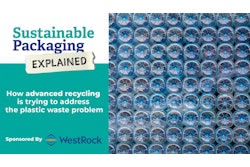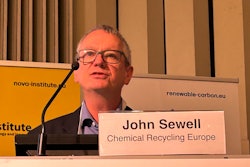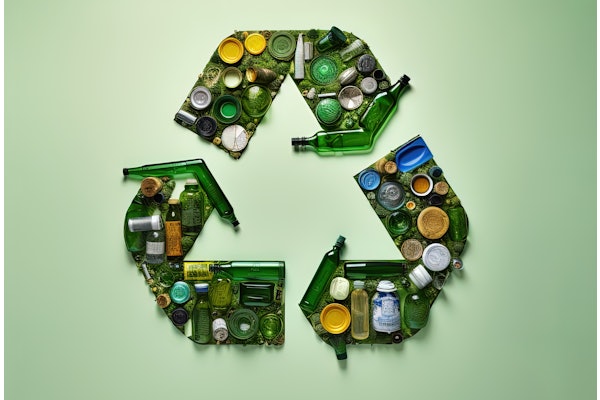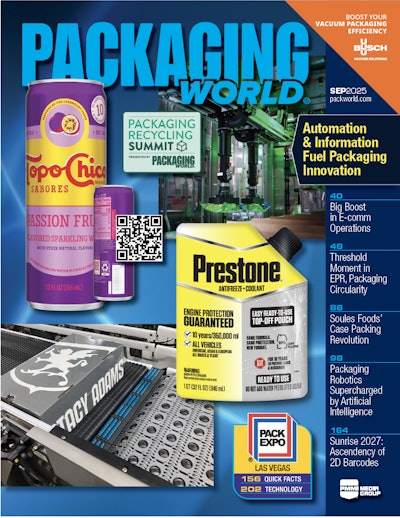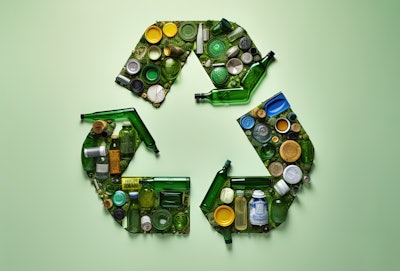
The U.S. Plastics Pact (USPP) has issued a detailed position paper outlining how physical and chemical recycling should be used within a circular economy for plastic packaging. The paper’s core guidance centers on following the EPA Waste Management Hierarchy, prioritizing reduction and reuse first, then mechanical recycling, and reserving physical or chemical recycling for materials that cannot otherwise be addressed.
The position paper reflects months of research, literature review, data evaluation, and collaboration across brands, recyclers, retailers, non-profits, and other Activators in the USPP network. That extensive process helped build consensus on how these technologies can support circularity without displacing lower-impact strategies and shaped the detailed guardrails that appear throughout the document.
“Too often, these technologies are talked about in extremes—either as a silver bullet or as something to be dismissed outright,” says USPP President and CEO Jonathan Quinn. “This position paper is exactly what the USPP is designed to do—bring Activators together in a pre-competitive space to wrestle with hard problems and consider data-driven real-world solutions.”
In the paper, USPP calls for strong environmental and human health safeguards, transparent mass balance accounting, chain-of-custody certification, consistent measurement standards, and improvements in packaging design, sortation, and collection systems.
When and how these technologies fit
As interest in chemical recycling grows, the USPP highlights the need for consistent terminology and realistic expectations. The paper adopts the emerging ISO framework that categorizes recycling into four types: mechanical, physical, chemical, and organic/biological. Mechanical recycling remains the most common pathway, while physical recycling uses solvents to remove contaminants without altering polymer chains. Chemical recycling breaks polymers down into molecular components using heat or chemicals.
The position paper explains that physical and chemical recycling may be useful in specific cases. Flexible films and multilayer formats remain difficult for mechanical recyclers to process. Certain food packaging also poses challenges because of food residue or strict requirements for high-purity PCR. In some situations, physical and chemical processes can yield material suitable for medical, pharmaceutical, or food-contact applications where mechanically recycled content is not currently acceptable.
Throughout the paper, USPP emphasizes that mechanical recycling should be the priority. Physical and chemical recycling tend to use more energy, rely on solvents or catalysts, and can produce hazardous waste streams. These impacts underscore the need to rely on them only when reduction, reuse, and mechanical recycling cannot meet material needs.
Says Tamsin Ettefagh, chief sustainability officer and EVP of government and industry relations for physical recycler and USPP member PureCycle Technologies, “This position paper recognizes that physical and chemical recycling technologies can play a meaningful role in addressing plastics that are difficult to recycle through conventional means.
“As a physical recycler, we believe it is essential to define responsible parameters and position these technologies as complementary within the broader system. The U.S. Plastics Pact is helping create the clarity companies need to innovate with confidence. With the right guardrails, we can scale solutions that prioritize material-to-material recycling, expand circularity, protect communities, and keep more plastic in the value chain—not in the environment.”
Safeguards, transparency, and system improvements
A significant portion of the position paper focuses on safeguards required as physical and chemical recycling expand. The USPP calls for lifecycle assessments verified by independent third parties, using consistent boundaries and accounting for transportation and fossil fuel extraction impacts when comparing processes to virgin plastic manufacturing. The paper also notes that facilities should follow ISO 14001-aligned environmental management systems and publicly report air and water emissions.
Environmental justice considerations are also central to the guidance. According to the paper, facilities should not be sited in environmental justice communities, and cumulative industrial impacts in surrounding areas should be evaluated before development. Community engagement is essential throughout the siting process, it says, and facilities should fund or conduct community emissions testing where appropriate, assisting with mitigation measures if results exceed recommended thresholds.
Transparency also applies to the materials produced. The USPP recommends chain-of-custody certification aligned with ISO 22095 for all physically or chemically recycled outputs. Mass balance accounting methods should be clearly disclosed, and post-consumer and pre-consumer recycled content should be reported separately. Waste-to-fuel processes are excluded from being considered recycling by the USPP.
The paper adds that recyclers should be clear about yield losses, including how much incoming material becomes new feedstock versus waste or byproducts. It also advises that aligning bale specifications across recyclers will help brand owners design packaging that better supports all recycling pathways.
System improvements remain essential, according to the paper. The USPP highlights the need for better sortation technologies, simpler consumer labeling, and more effective collection systems to increase feedstock availability. Sustained demand for recycled content will support investments in all recycling methods, it says.
A complementary piece of a larger circularity framework
The position paper frames physical and chemical recycling as tools that can help recover difficult formats and produce high-purity outputs. At the same time, they come with higher environmental impacts and should not be viewed as primary strategies. The USPP stresses that a circular economy begins with reducing plastic use, improving packaging design, and strengthening mechanical recycling. With clear safeguards, accountability measures, and alignment with the EPA Waste Management Hierarchy, the USPP believes physical and chemical recycling can play a responsible supporting role in reducing plastic waste and reliance on virgin plastic.
Says Crystal Bayliss, director of strategy and engagement at the USPP, “When implemented with the right standards and accountability, physical and chemical recycling can help unlock new circularity pathways for materials that today have no viable end-of-life solution.” PW



